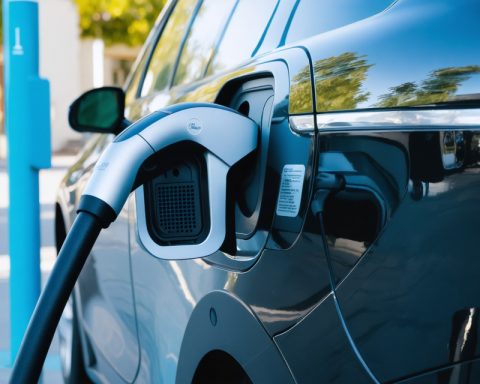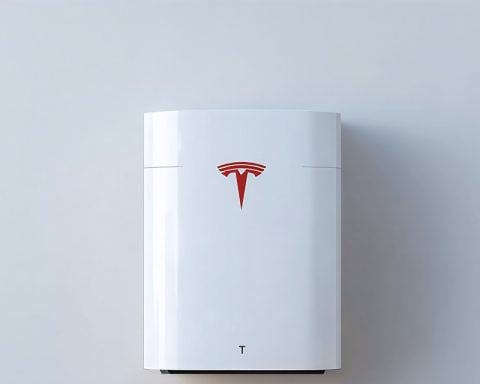- The National Electric Vehicle Infrastructure (NEVI) program, a $5 billion initiative, has paused its efforts to expand the EV charging network across the U.S.
- Despite the pause, over 126 charging outlets funded by NEVI still enhance critical locations nationwide.
- Private companies like Tesla, Walmart, and 7-Eleven continue expanding their EV charging capabilities, bolstering the network.
- Though federal funding is temporarily halted, experts maintain confidence in the continued development of a national EV charging network.
- The situation is perceived as a temporary pause rather than a significant setback for America’s electrified transportation future.
- The collaborative efforts of both public and private sectors keep the vision for clean energy and sustainable transport moving forward.
A surprising halt has come to the National Electric Vehicle Infrastructure (NEVI) program, a $5 billion government initiative aimed at revolutionizing the U.S.’s electric vehicle (EV) landscape. Across bustling cities and serene rural stretches, plans to erect a robust network of EV charging stations now find themselves paused. But this interruption, led by a directive to decertify state-level charging projects, doesn’t spell the doom many fear for America’s electric future.
Imagine this: Crisscrossing the nation, over 126 publicly accessible charging outlets light up key junctions thanks to earlier NEVI investments. As state plans hit the brakes, a quiet yet resilient momentum carries forward in the private sector. Companies like Tesla sprint ahead, with its sprawling Supercharger network setting industry standards, while retail giants like Walmart and 7-Eleven enlarge their footprints in the EV space.
The federal hiccup has sparked debate, but experts whisper a reassuring tale: This hold might not spell disaster. With public and private sectors still dedicated to a shared clean-energy vision, the loss of a single funding stream feels less like a full stop and more like a comma in an ongoing narrative. Before NEVI’s freeze, federal backing already propelled rapid charger deployment along major interstate highways, knitting a greener travel route.
A fragmented puzzle gradually coming together, America’s EV network has thrived on complementary government actions and resilient private initiatives—a collaborative ballet unperturbed by one program’s pause. As plans regroup, the nation marches forward, confident that the road to an electrified future remains open and ripe for transformation. Despite legislative hurdles, the journey toward sustainable transport continues, driven by an unwavering collective spirit.
The Real Story Behind the NEVI Program Pause: What It Means for America’s EV Revolution
How-To Steps & Life Hacks for EV Charging
1. Plan Your Route: Use apps like PlugShare or ChargePoint to map out available charging stations on your route.
2. Optimize Charging Sessions: Charge during off-peak hours when electricity rates may be lower. Check if your area offers time-of-use rates.
3. Maximize Charging Speed: Ensure your vehicle’s software is up-to-date for optimum charging capability.
4. Use Rewards Programs: Many charging networks offer reward programs that can accumulate points for free charging sessions.
5. Install a Home Charger: Consider a Level 2 home EV charger for more efficiency and speed than using a typical outlet.
Real-World Use Cases
– Urban Commuters: Most urban areas offer a dense network of charging stations, making short commutes and trip reliability less concerning.
– Road Trips: Companies expanding rapid chargers along highways enhance long-distance road trip viability for EV owners.
– Commercial Fleets: Businesses are adopting electrified fleets, taking advantage of lower operational costs and available incentives.
Market Forecasts & Industry Trends
– According to a report by BloombergNEF, global EV sales are expected to reach 26 million by 2030, contributing to increased demand for charging infrastructure.
– The private sector’s investment in charging infrastructure is on the rise, with companies like Tesla and Electrify America leading the charge.
– Link: Visit Bloomberg
Reviews & Comparisons
– Tesla Superchargers vs. Others: Tesla currently leads with a fast and reliable Supercharger network. Other networks like Electrify America are praised for user-friendliness but sometimes criticized for reliability issues.
Controversies & Limitations
– Legislative Hurdles: The NEVI program’s pause is primarily due to bureaucratic delays and state-level project decertifications, hindering immediate expansion efforts.
– Rural vs. Urban Divide: There remains a disparity in EV infrastructure between urban centers and rural areas, affecting adoption rates.
Features, Specs & Pricing
– Charging Speed: Modern chargers can range from 50 kW to 350 kW, affecting the time required to charge an EV.
– Cost: Charging costs vary widely, with public charging being typically more expensive than home charging.
Security & Sustainability
– Cybersecurity: As more infrastructure becomes connected, ensuring robust cybersecurity measures is essential to protect against potential breaches.
– Green Energy Integration: Many new chargers are being integrated with solar panels and stored energy solutions to reduce carbon footprints.
Insights & Predictions
– Private Sector Growth: With the NEVI program paused, expect an acceleration in private-sector-led projects, ensuring continuous infrastructure growth.
– EV Technology Advancements: Battery technology is rapidly advancing, promising longer ranges and reduced charging times in the near future.
Tutorials & Compatibility
– EV Compatibility: Ensure any charging station is compatible with your EV’s plug type. Tesla owners may need adapters for non-Tesla stations.
Pros & Cons Overview
– Pros:
– Decreased reliance on fossil fuels.
– Lower long-term operating costs.
– Expanding infrastructure network.
– Cons:
– Limited charging station availability in remote areas.
– Initial higher cost of EVs compared to traditional vehicles.
Actionable Recommendations
1. Stay Informed: Keep updated on infrastructure developments and incentives that could benefit your EV ownership experience.
2. Advocate: Encourage local governments and businesses to invest in charging infrastructure, especially in underserved areas.
3. Join EV Communities: Engage with online forums and local groups for tips, tricks, and updates on the EV landscape.
By understanding the current EV ecosystem and actively participating in its development, you can ensure a smooth transition to an electrified transportation future.
For more information and updates, visit EcoWatch.














